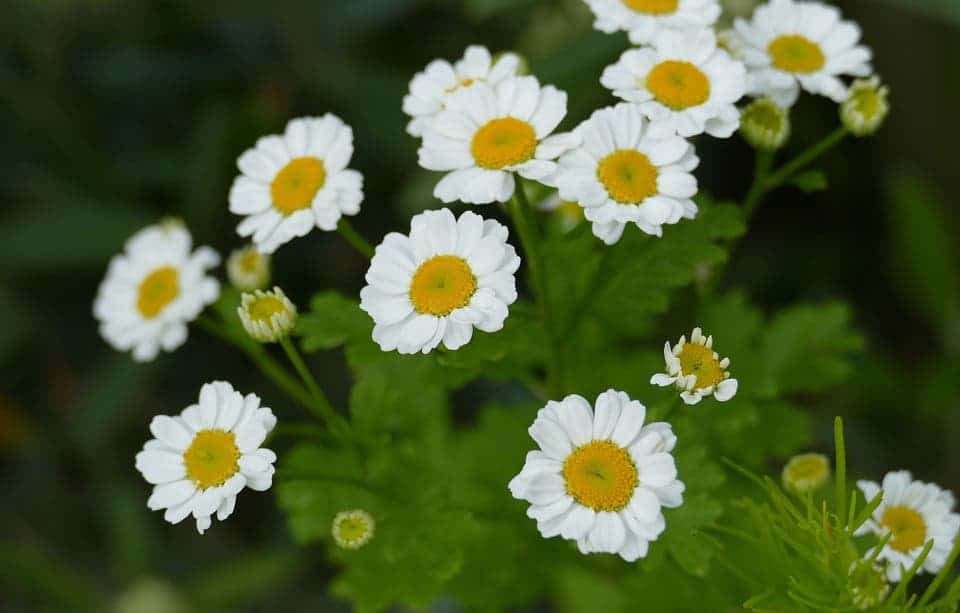Researchers at the University of Birmingham have found a way to produce an anti-cancer compound from the common flower feverfew.
Feverfew (Tanacetum parthenium) is a common sight across the UK, gracing many gardens and flower pots. It’s also a common sight in health food shops, where it’s sold as a remedy for migraines, aches, and pains. Now, researchers at the University of Birmingham describe how the flower can be used to produce parthenolide, a compound identified previously as having anti-cancer properties. The team was also able to modify the substance to kill chronic lymphocytic leukaemia (CLL) cells in the laboratory.
Flower power
“There are several effective treatments for CLL, but after a time the disease in some patients becomes resistant,” explains Dr. Angelo Agathanggelou of the Institute of Cancer and Genomic Studies, lead researcher of this paper.
“We were interested in finding out more about the potential of parthenolide. With expertise from colleagues in the School of Chemistry we’ve been able to demonstrate that this compound shows real promise and could provide alternative treatment options for CLL patients.
Although parthenolide is available commercially, it is extremely expensive right now. Couple that with its relatively poor performance, and it’s easy to see why the substance hasn’t made many headlines. However, the team’s modified parthenolide compound is much more effective and, being extracted from a common flowering plant, is much cheaper to produce.
The compound works by increasing the levels of reactive oxygen species (ROS) in cells, the team reports. Since cancer cells naturally exhibit higher levels of ROS molecules, the compound can increase their concentration beyond a critical point to kill the cancer cells while simultaneously leaving healthy cells alive.
The research was initiated by Dr. Angelo Agathanggelou, who is investigating new ways to treat CLL, a type of cancer which typically affects older people. The study involved researchers from the University’s Institute of Cancer and Genomic Studies and the School of Chemistry, and with the support of the Birmingham University’s Winterbourne Botanic Garden, which oversaw the growing of feverfews in sufficient quantities.
“This research is important not only because we have shown a way of producing parthenolide that could make it much more accessible to researchers, but also because we’ve been able to improve its “drug-like” properties to kill cancer cells,” explains Professor John Fossey, of the University’s School of Chemistry. “It’s a clear demonstration that parthenolide has the potential to progress from the flowerbed into the clinic.”
Feverfew is a short-lived, perennial plant within the Asteraceae (daisy) family. Its name comes from the Latin term for “fever reducer”, although the plant is no longer used for this purpose. The team explains that out of the Asteraceae family, feverfew showed “optimum levels of parthenolide.”
The paper “Derivatisation of parthenolide to address chemoresistant chronic lymphocytic leukaemia” has been published in the journal MedChemCom.










